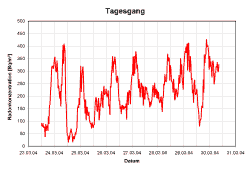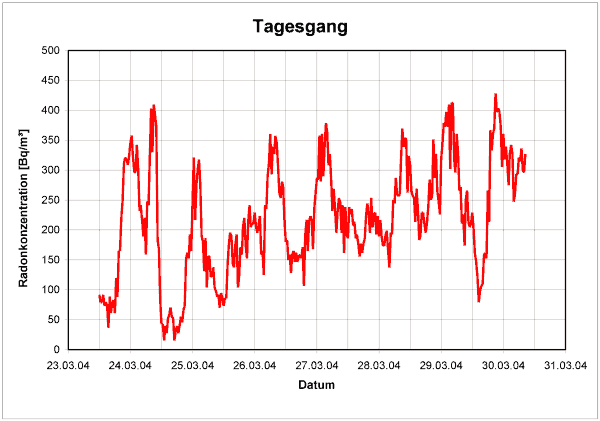Field of application


Exposimeters are a world-wide well-established procedure
for measuring indoor radon concentrations.
The measurement of the radon activity concentration is a matter of particular interest at home and at work.
Depending on the problem different measuring systems with different measurement intervals can be used.
Exposimeters are a world-wide well-established procedure for measuring indoor radon
concentrations.
For the determination of the radon exposure at home or at work
integrating long-term measurements (with measuring intervals from several webeks up to
1 year) are a common method. They are usually carried out by inexpensive track etch
detectors (also called exposimeter). These detectors are used world-wide in large
numbers and represent an approved and reliable measuring system.
The detectors are usually send by post. Installation and handling are very easy and can be done by the customers themselves. After the measurement the detectors are analysed in a laboratory. It makes sense, that the result is interpreted by an radon expert.
If you are interested in a long-term measurement, you can order track etch detectors immediately and uncomplicated at the company Kemski & Partner.
Example of the daily change of the radon acitivity concentration. Time-resolving
measurements of the radon activity concentration are necessary, if the influence of
ventilation or the pattern of using a room as well as changes in the building structure
or of the working conditions have to be investigated. These problems often are of interest
for specialists in authorities, for consultants in the environmental sciences or for
scientists at universities. For these purposes instruments containing electronic devices
operated by power supply or batteries like the devices of the Radim line are necessary.
Sensitivity and time resolution have to be suitable for the particular problem.


Example of the daily change of the radon acitivity concentration.
Beside indoor measurements the determination of radon activity concentration in soil gas is of interest, e.g. before starting the construction of a house. Here, the values are in a range of approximately 5.000 to about 2.000.000 Bq/m3 - much more than measured indoor. Due to the spatial variation in the soil, radon has always to be measured at several measuring sites at the same time. For this purpose the use of Lucas cells has been well approved. These small glass cells (volume: 100 to 500 ml) are filled with soil gas and measured in a scintillation counter. Especially for this kind of application the SISIE was developed. With an additional mechanism for de-emanating of water samples it is possible to analyse radon in water with a high accuracy.



